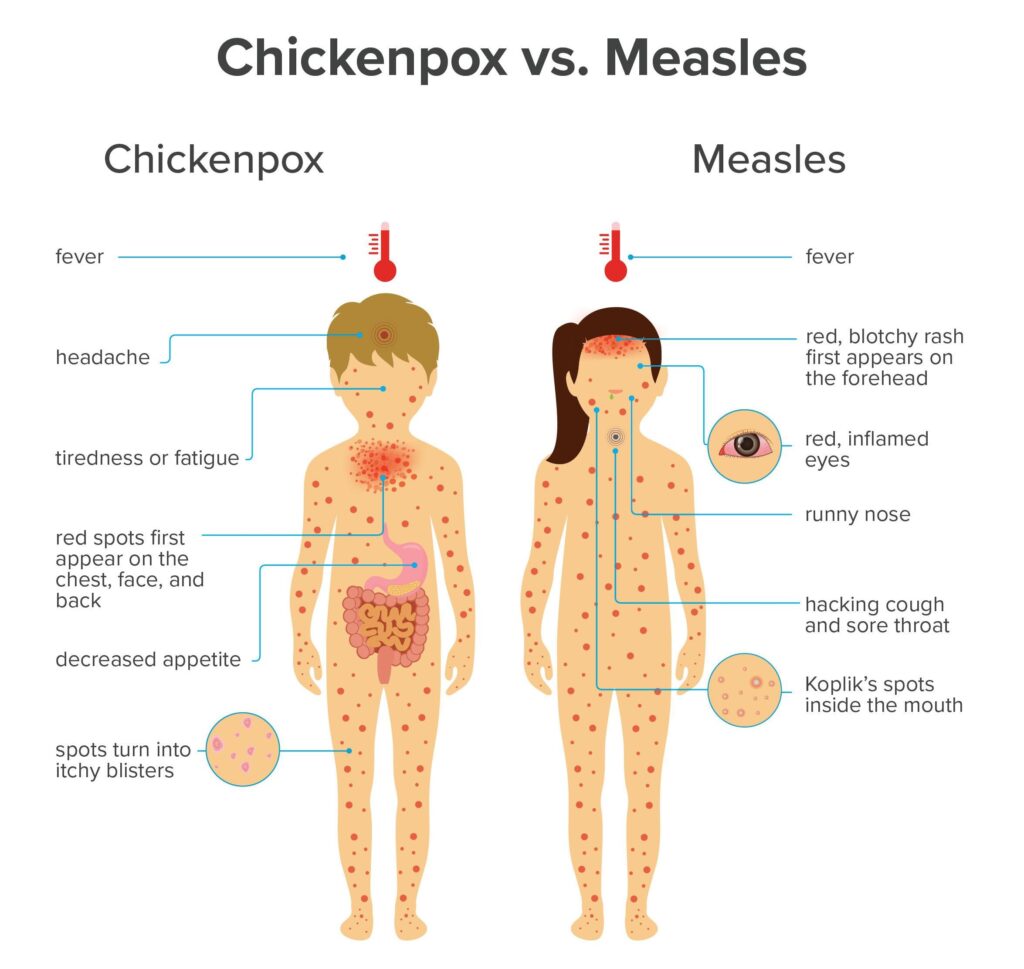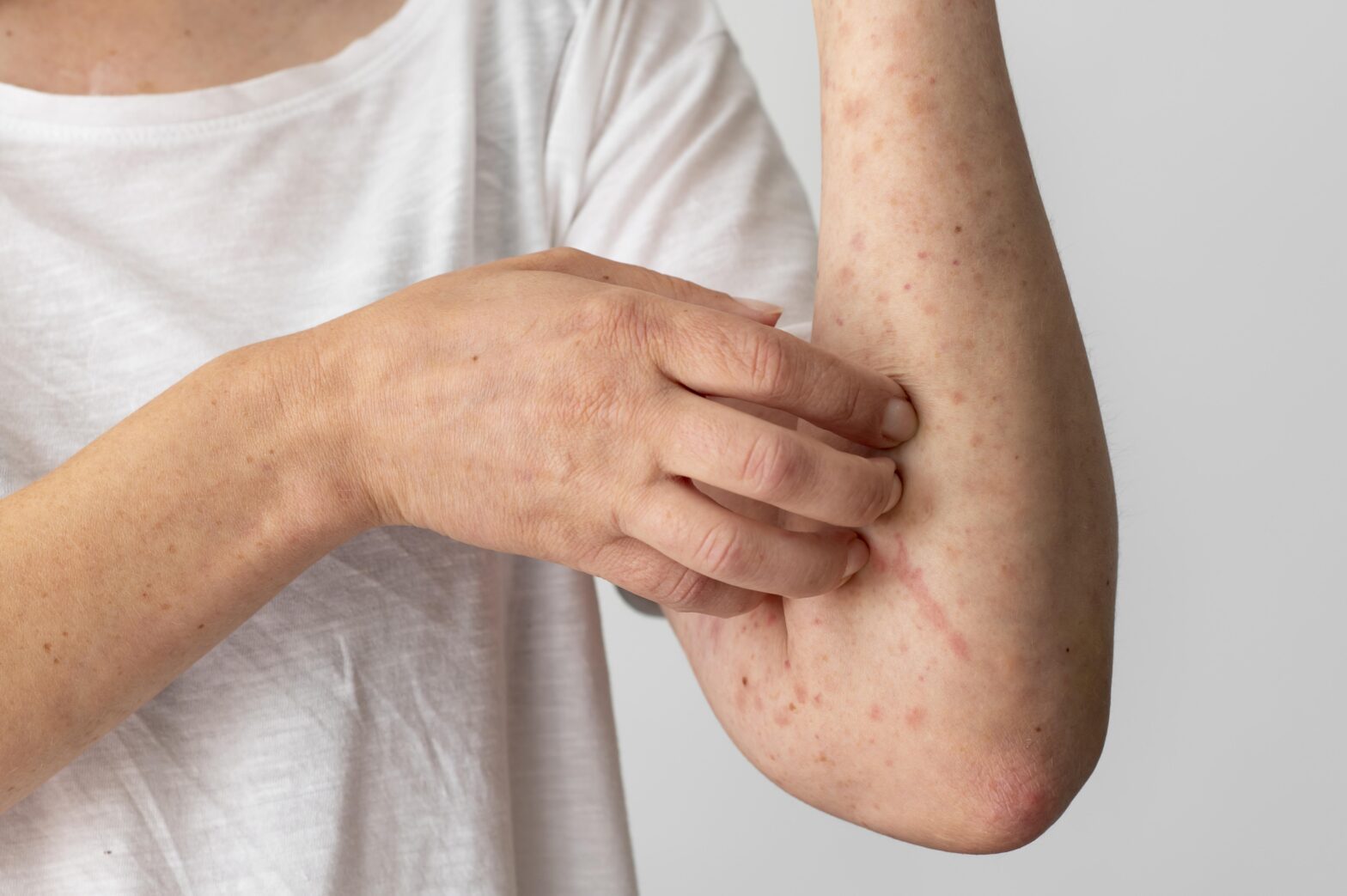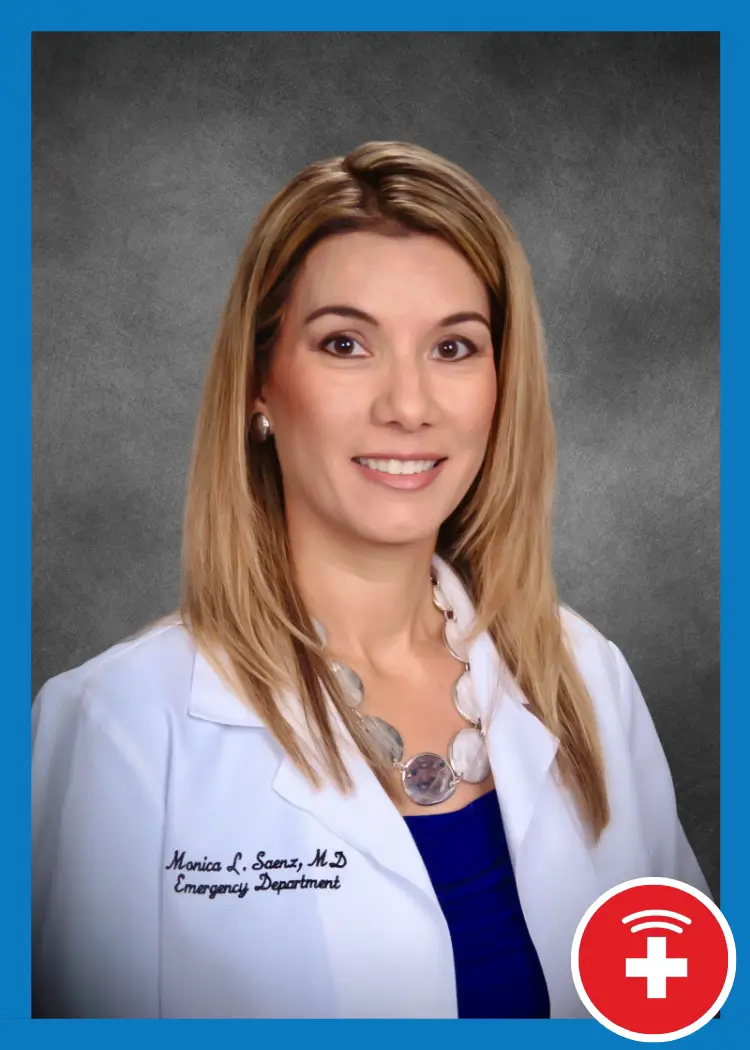Is it Measles or Chickenpox? Causes, Symptoms, and Treatment
Chickenpox and measles are both infections that can spread quickly, but they have different characteristics that set them apart. Understanding these differences is essential for understanding how each illness develops, what symptoms to look out for, and how to provide appropriate care.

Key Points:
- Chickenpox is caused by the varicella-zoster virus, while measles is caused by the measles virus.
- Chickenpox: Rash starts as fluid-filled blisters causing itching, eventually forming scabs. It appears on chest, back, face, and spreads across the body. Other symptoms include fever, tiredness, loss of appetite, and headache.
- Measles: Symptoms appear 10 to 14 days after exposure and include runny nose, cough, sore throat, red, swollen eyes, and Koplik spots.
- Antibiotics are ineffective since both are viral infections.
What causes chickenpox and measles?
The varicella-zoster virus causes chickenpox, and the measles virus causes measles. Both chickenpox and measles are highly contagious. If someone who hasn’t had chickenpox or isn’t vaccinated against it comes into contact with an infected person, there’s a 90 percent chance they’ll catch it, according to the Centers for Disease Control and Prevention (CDC). Similarly, if you’re unvaccinated and near someone with measles, there’s a 9 in 10 chance of getting infected.
These viruses spread easily through the air. This means you can inhale tiny droplets containing the virus from an infected person. Additionally, you can contract the virus by touching surfaces or objects contaminated by the virus. In the case of chickenpox, the fluid from the blisters can also transmit the virus.
What are the symptoms of chickenpox and measles?
Both measles and chickenpox lead to rashes, but these rashes are different enough that knowing about both conditions can help you distinguish between them more easily.
When someone gets chickenpox, they will develop a rash that turns into fluid-filled blisters that cause itching. These blisters eventually form scabs. The rash commonly appears initially on the chest, back, and face before spreading across the entire body, including the mouth, eyelids, or genital region. It typically takes around one week for all the blisters to scab over fully. It’s common for a person to have between 250 to 500 of these blisters. Other symptoms, such as fever, tiredness, loss of appetite, and headache are common.
In contrast, the symptoms of measles typically appear around 10 to 14 days after exposure to the virus. Common symptoms of measles include a runny nose, cough, sore throat, and red, swollen eyes (conjunctivitis). People with measles might also have Koplik spots, tiny red spots with blue-white centers inside the mouth and on the cheeks.

How are chickenpox and measles treated?
Since viruses cause both chickenpox and measles, antibiotics won’t help. Instead, treatment aims to soothe symptoms and lower the chances of any problems.
If you have chickenpox, you might use an over-the-counter medicine like calamine lotion to help with itching.
If you’re at risk of having problems from chickenpox, see your doctor immediately.
People at risk of having severe issues from chickenpox include:
- Weak immune systems
- Pregnant women
- Newborn babies
- Long-term illnesses that weaken the immune system
- Haven’t had chickenpox or been vaccinated
How do I treat chickenpox or measles symptoms at home?
Most symptoms don’t usually require going to the doctor and can be managed at home by:
- Resting
- Staying hydrated
- Stay home -no school, daycare, or work to prevent spreading the virus.
- Take antihistamines to help with itching.
Other ways you can manage symptoms of chickenpox and measles
- Use over-the-counter fever reducers like acetaminophen or ibuprofen. Don’t give aspirin to children because it can cause a severe condition called Reye’s syndrome.
- Use a humidifier to soothe a sore throat and cough.
- Wear gloves, especially when you sleep, to stop yourself from scratching. Keep your fingernails short and clean to avoid infecting blisters.
- Take cool baths or use cool clothes to ease itching. You can also use oatmeal products from the store to help your skin feel better.
- Avoid eating spicy or acidic foods if you have blisters in your mouth.
While managing symptoms at home can make you feel better, it’s not a substitute for medical evaluation.
When to See a Doctor
Be sure to see a doctor if you think you or someone you know might have chickenpox or measles. While these illnesses often go away on their own, there’s a chance of serious complications, especially for pregnant women, babies, and people with weakened immune systems.
If you or your child gets a rash and other symptoms like fever, cough, or pink eye, it’s vital to see a healthcare provider immediately. They can help you determine if you need further tests and give you the best advice on managing the illness.
At DOC-AID Urgent Care, we offer a wide range of services for various medical needs, including treatment for chickenpox and measles. We have convenient locations to serve you. For more information, please call us or book an appointment online.



